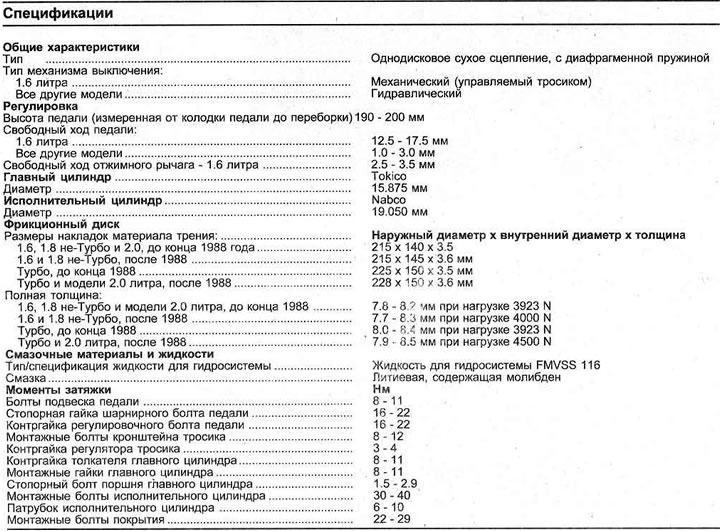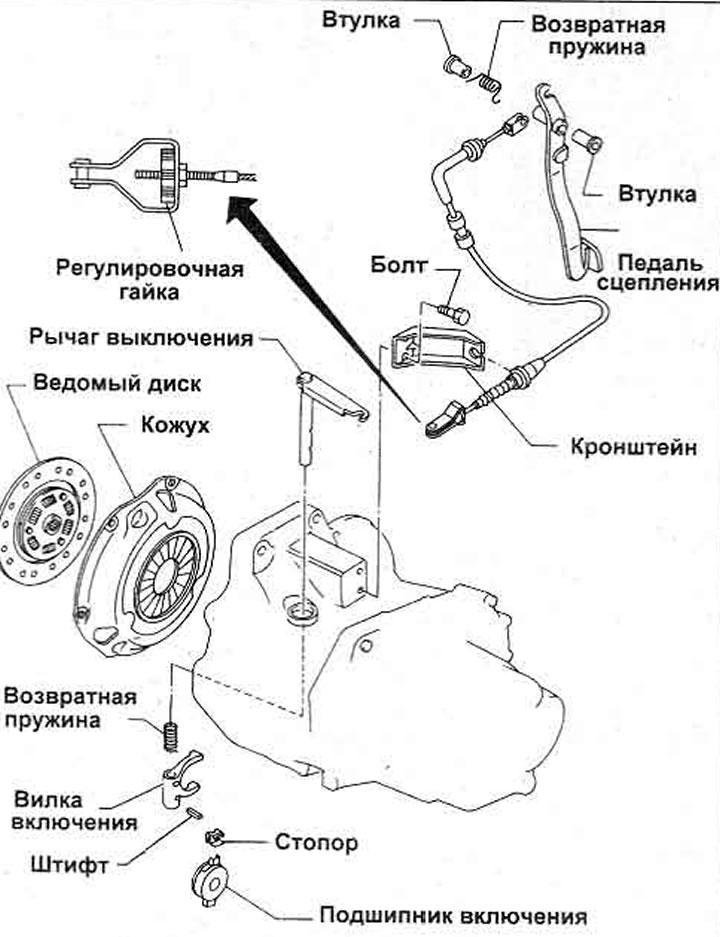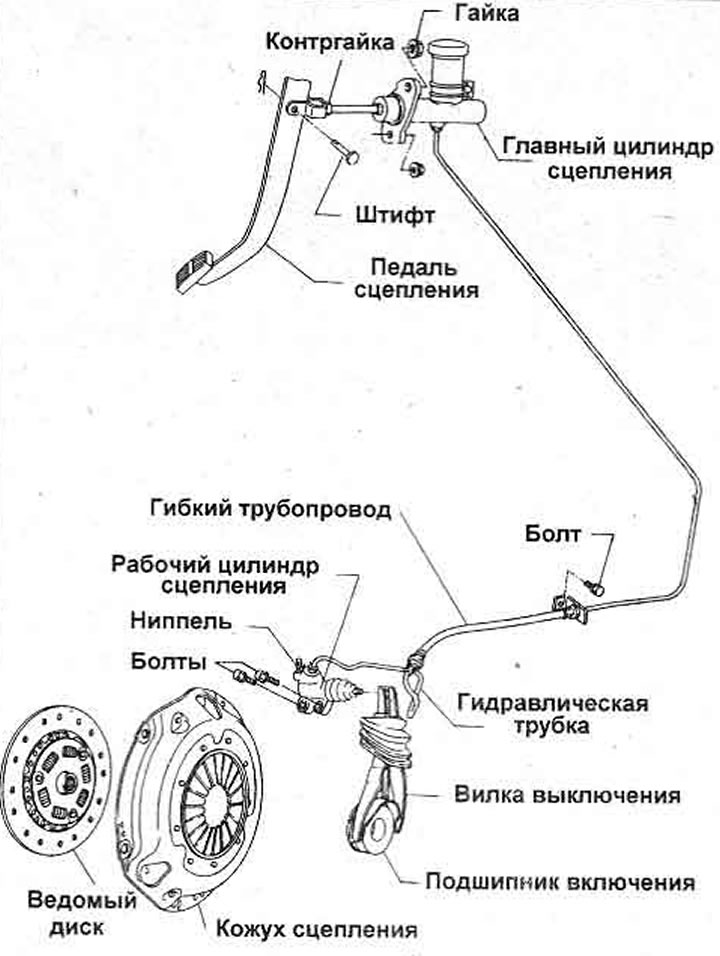
All manual transmission models are equipped with a single-plate dry clutch with a diaphragm spring. The clutch consists of a friction disc, a support cover, a release bearing and a release mechanism. All of these components are housed in a large clutch housing located between the engine and transmission. On 1.6-liter models, the release mechanism is mechanical, controlled by a cable; on 1.8 and 2.0-liter models, the mechanism is hydraulic, consisting of a master cylinder, an actuator cylinder and connecting hydraulic tubes and flexible hoses.
The friction disc is located between the engine flywheel and the clutch pressure plate and slides freely on the slots of the transmission input shaft. It consists of two round linings made of friction material, and a spring-loaded hub, to absorb transmission shocks.
The support cover is bolted to the engine flywheel and oriented by three locating pins; it contains the clutch housing, diaphragm spring and pressure plate. When the assembly is bolted to the flywheel, rotation is transferred from the crankshaft through the flywheel and clutch housing to the friction disc (these last three components are clamped securely together by the pressure plate and diaphragm spring) and from the friction disc to the transmission input shaft. To interrupt the transmission of rotation, the spring is pressed by the release bearing, which is mounted on the input shaft of the gearbox; When the driver presses the clutch pedal, the release bearing pushes into the center of the diaphragm spring. Pressure at the center distorts the spring so that it is weakened at the outer edge, releasing the pressure plate.
On 1.6 liter models, pressing the clutch pedal is transmitted to the clutch by a cable, rotates the release shaft, pulls the release fork, which presses on the release bearing.
On 1.8 and 2.0 liter models, pressing the clutch pedal acts on a short pushrod, moving forward a piston in the master cylinder, which is installed in the engine compartment on the right side. Hydraulic pressure is transmitted to the slave cylinder, (which is installed externally on the clutch housing), and causes the piston to move. The pusher presses on the upper end of the release fork. The fork, in turn, presses on the release bearing.
With wear on the friction disc linings. the pressure plate will move towards the flywheel, thus allowing the diaphragm spring to move towards the throwout bearing and reducing the play that should be between the spring and the bearing. To prevent clutch slipping on 1.6 liter models, the clutch cable must be periodically adjusted. On 1.8 and 2.0 liter models, adjustment is done automatically in the main cylinder of the hydraulic system.

Pic. 5.1. Cable Actuated Clutch Parts - 1.6 Liter Models

Pic. 5.2. Hydraulically controlled clutch parts - all other models. Early type hydraulic pipes and hose shown